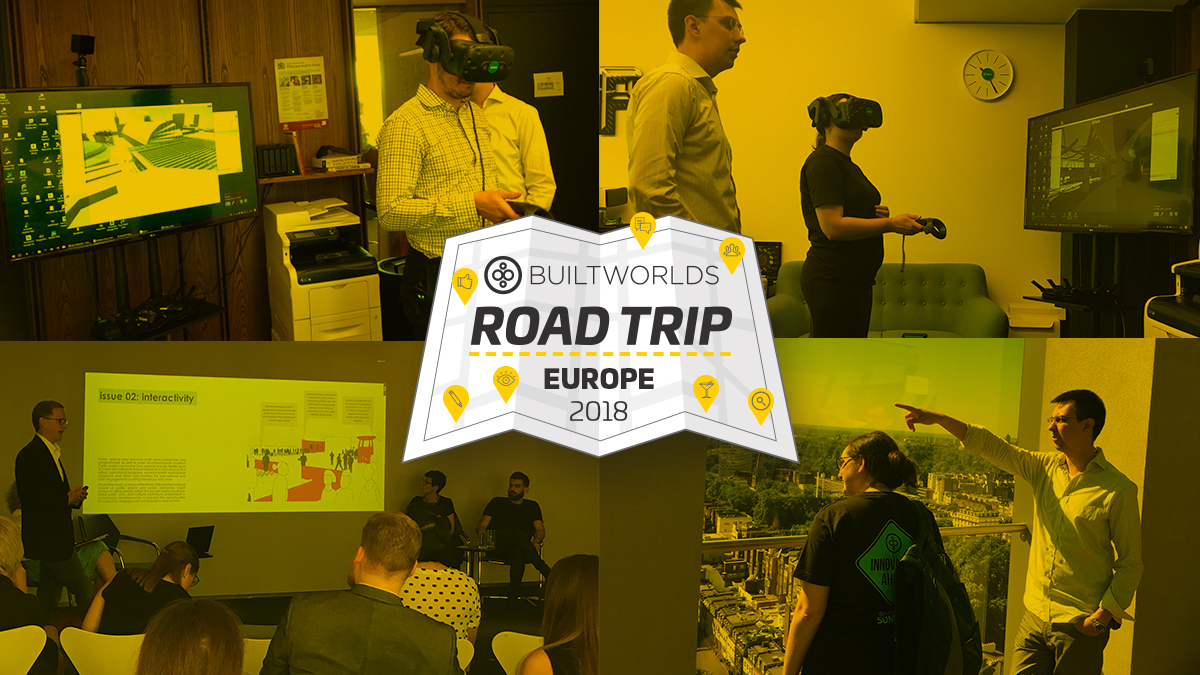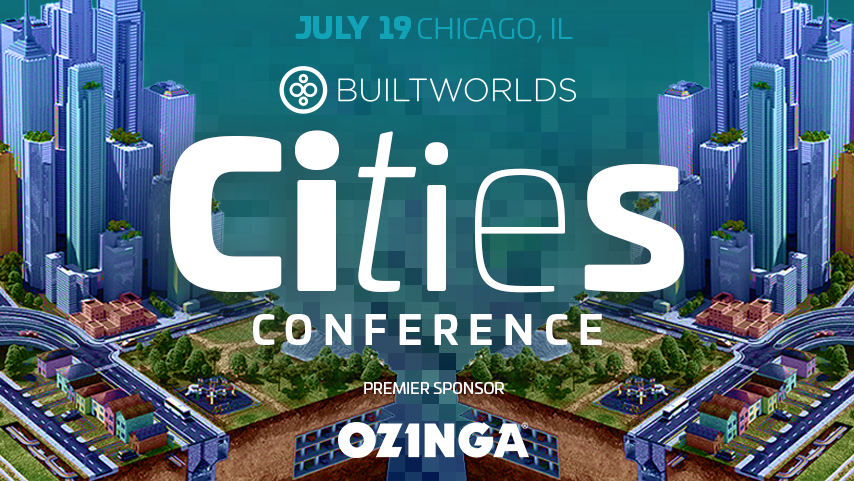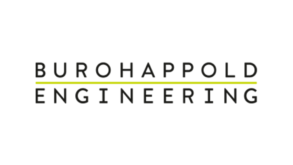
For those who don’t know, BuiltWorlds is in Europe this week meeting with some of the major players in the EU’s built world tech ecosystem. Each day, Isabel Singer and Nick Durham will be producing written recaps of the trip, citing notable stops and major takeaways from our meetings. Check out the Day 1 recap here. For live updates, follow us on Twitter.
The morning commute
7:35 a.m. – Nick
We’re out of bed early to finish some writing. We map out our day, which consists of three meetings and one evening event. We also need to do some prep work for our Paris meetup tomorrow. I get ready in 7 minutes flat, which I think Isabel is impressed by, and we head off to Paddington Station for our first meeting with 3D Repo.
One of the most interesting things I’ve noticed in London has been the efficiency of the public transit system. For every destination, I find myself googling the fastest way to travel and am starting to realize it’s a complete waste of time. The Tube is simply more efficient than any other form of transit here. It’s cheaper, it’s faster, rarely delayed, and dare I say it, a relatively nice experience. There’s been a few times when it’s been overcrowded, but never unbearable. Of course, I’m comparing to the El, which you can hardly use to get anywhere in Chicago, and NYC’s subway, which well exceeds fire capacity and all forms of comfort, more often than not. I haven’t ridden the bus because I’m afraid of screwing that up, but I’ve heard great things.
I digress. I need some coffee.
9:00 a.m. – Isabel
 While heading to 3D Repo for our first meeting of the morning, Nick and I pass through Paddington tube station. I can’t help but observe the massive Crossrail Paddington Station construction project. The project broke ground in 2011 and promises to bring a new train line, the Elizabeth line, to London in December 2018. The Crossrail Paddington Station project exemplifies London’s devotion to infrastructural sustainability, much like the Argent King’s Cross Development, which I discussed in yesterday’s recap. The project is financially sustainable because a number of private real estate developments will subsidize the cost of the station. Beyond that, the Crossrail Paddington Station project is highly flexible. It incorporates 40 public spaces that can be adapted for multiple uses. After exploring the King’s Cross Development and Crossrail Paddington Station, I smile at the fact that I have a number of English insights to bring to our Cities conference on July 19.
While heading to 3D Repo for our first meeting of the morning, Nick and I pass through Paddington tube station. I can’t help but observe the massive Crossrail Paddington Station construction project. The project broke ground in 2011 and promises to bring a new train line, the Elizabeth line, to London in December 2018. The Crossrail Paddington Station project exemplifies London’s devotion to infrastructural sustainability, much like the Argent King’s Cross Development, which I discussed in yesterday’s recap. The project is financially sustainable because a number of private real estate developments will subsidize the cost of the station. Beyond that, the Crossrail Paddington Station project is highly flexible. It incorporates 40 public spaces that can be adapted for multiple uses. After exploring the King’s Cross Development and Crossrail Paddington Station, I smile at the fact that I have a number of English insights to bring to our Cities conference on July 19.
3D Repo
9:30 a.m. – Isabel
We land at the 3D Repo offices and head in to meet with their CEO, Dr. Jozef Dobos. 3D Repo is a SaaS (software as a service) for BIM. It is unique in the market because it is fully open source. Because 3D Repo is open source and only charges for hosting data, it has a variety of applications. Most commonly, project teams use 3D Repo to streamline design and resolve major issues before they start building. For instance, Jozef overlaid the MEP model of the Skanska UK headquarters over the structural model and we could clearly see the exact location of potential clashes highlighted in red.
Another creative use of 3D Repo is for safety training. Using existing engineering models, a contractor can create a VR tour of a construction site on 3D Repo and utilize the tour to inform employees about the exclusion zones around equipment. Previously, contractors had to physically bring in a piece of equipment and draw a circle on the floor to demonstrate the exclusion zones. Jozef proudly tells us that both Balfour Beatty and Vinci UK use 3D Repo for safety training.
My favorite use of the 3D Repo platform is in relation to 3D Repo’s partnership with Transport Research Lab for an autonomous vehicle project. The Transport Research Lab laser scanned London and has uploaded the data to 3D Repo, where car companies can virtually test their algorithm for self-driving vehicles.
Hung out with @3DRepo for a bit. Got techy. They are a cloud-based collaborative platform for 3D models.
Thanks to Jozef for an amazing rooftop tour of London as well. pic.twitter.com/FSxDh5DHfQ— BuiltWorlds (@builtworlds) June 26, 2018
9:45 a.m. – Nick
Isabel’s already dazzled you with the facts about 3D Repo. I’m just here to add a little color. I’m the John Madden to her Al Michaels…

Meeting Jozef was a pleasure. He’s a quiet guy and wickedly smart, and was nice enough to oblige me and do a quick video interview (which you’ll be able to catch on the Vlog). While on this visit, Jozef took us up to the rooftop to give us a spectacular view of London. He pointed to at least a half dozen of seemingly random buildings in the distance that were in fact quite historic and not at all random.
We continue the visit by heading down to his office to demo the 3D Repo product. With ease, he toggles through the product experience faster than I could process and pulls up some 3D models of familiar projects on a 60” screen. A few minutes later, he shows us the model for the entire King’s Cross district which we toured yesterday, and Isabel and I are in awe. He offers us his VR headset and we walk through the 3D property like giddy children, seeing the district through a completely different perspective.
Microdesk
11:25 a.m. – Isabel
Our next meeting was with Mircodesk near Trafalgar Square. We interviewed Lukasz Adamik, the Director of Consulting Services, for an upcoming article. Lukasz told us about Microdesk’s work in the UK. He emphasised that the British government’s top down approach to regulation of construction has helped promote the adoption of vital technology. Stay tuned for the full interview to learn more!
12:10 p.m. – Nick
We also chatted about the event last night. Lukas was the moderator, so we rehashed some of the bigger discussion points around the smart infrastructure trends he’s seen in London. The conversation quickly moves to data and figuring out how to use it to get more predictive, to improve experiences and processes. Somewhere towards the end of the discussion, we learn his favorite London meal is a bowl of curry.
Pi Labs
3:00 p.m. – Isabel
Next, I headed to Pi Labs, one of the oldest prop tech VCs in the world, to gain the inside scoop on the European venture and prop tech communities for our Buildings 2.0 and Venture West conferences. I am fortunate to sit down with Dominic Wilson, Pi Labs’ Co-Founder and Managing Partner. According to Wilson, the strength of European prop tech lies in its geographic proximity, which helps facilitate a tight-knit European ecosystem.
According to Wilson, “one way of judging an ecosystem is by the number of companies and the scale of their funding. The US is always going to be better performing than Europe in that respect. However, Europe has an advantage in that it has a very strong consolidation of key real estate investors, advisors, and tech players in one place: London. The U.S. is more fragmented. The USA doesn’t have the same consolidation of ideation in one place, necessarily.”
“Stakeholders appreciate that when people engage and collaborate, innovation and productivity happens a lot quicker,”
In the past two years, European companies, large and small, have increasingly recognized the value of their ecosystem. “Stakeholders appreciate that when people engage and collaborate, innovation and productivity happens a lot quicker,” Wilson said.
While there are many benefits to geographic consolidation, I am confident that, in our digital age, it is possible to build an international network for thought leadership in the built environment that will push the industry forward. I think the BuiltWorlds Member Portal is at the forefront of that effort.
3:35 p.m. – Nick
I push some content out on social and do lunch in Trafalgar Square. I question whether I can head back to change and get a quick nap in before the Perkins+Will event and eventually decide to get on the Tube and head straight to the event.
Perkins + Will’s “The Future of London’s Built Environment”
6:15 p.m. – Nick
My train station is closed as I make the trek to the Perkins+Will event. I bump shoulders with more than one person on the sidewalk because I’m glued to my phone trying to find another route. As a result, I show up a few minutes late to the event (this blog jinxed the good run I had with the Tube). The event is “The Future of London’s Built Environment,” and is the official launch party for Perkins Will’s latest research report around Cities, exploring three major themes in London: 24-hour cities, public vs private and cultural diversity.
I sit in the back of the room and take in the scene. The dialogue is similar to our Cities Meet-Up last night, yet clearly more focused on the design/planning side as opposed to technology.
Just attended @perkinswill “Future of London’s Built Environment” event. Discussion was focused around 3 key topics:
1. The 24 hour city
2. Gender diversity in the industry
3. Public vs. privateMore on this event in tomorrow’s Roadtrip recap. pic.twitter.com/WelmTswbU0
— BuiltWorlds (@builtworlds) June 26, 2018
Here were some of the takeaways from the conversation:
24-hour cities
What does London need to do to become a 24-hour city? 75% of people are expected to live in cities in the next century and London is certainly expected to fit more millions. So, where do all of those people go? Where do they live? How do they interact with the city?
According to one of the speakers, “The idea is to flip the city at night, where nothing truly changes. Retail is open, restaurants are open. Daytime is busy and nighttime is busy. The entire rhythm of the city should be distributed more evenly and cater to different schedules.”
This hits home for me as I’m a night owl and have trouble getting a coffee or a decent meal at night. As work becomes less tied to a 9-5 desk, it makes it easier for professionals to shift their schedules and move to later hours. Good models for a 24-hour city are in Asia in Tokyo and Hong Kong.
Diversity
What makes a truly great global city? Most people think that great cities are measured by their size and density. But this alone doesn’t make a great city. As one of the panelists said, “To have a great city, you must also have a richness of diversity across all aspects of the city and its population. It must be a place where everyone can come, live, work with all kinds of different ideas and opinions about the world. We are all Londoners, but each of us is also many other things. This should be celebrated and supported.”
Public vs. Private
Great public spaces blend well with private spaces. Think of a park that is close to a good restaurant scene, or a historic square that has a great rooftop venue nearby. We’re more likely to go to these places. One speaker said, “Historically the public realm has been the physical manifestation of one’s understanding of their place in the collective world. It has been the backdrop for collective activities, whether the daily walk to work, the picnic in the park or the demonstration in the public square. With the expanded versions of the public realm, and the potential higher level of connectivity between commercially produced public places and traditional public places, comes the opportunity to expand the role of the public realm.”
This is probably a good place for me to mention that we have an entire  conference around Cities that’s focused around these points and more – transit and mobility, water and waste, and more smart infrastructure. So, if you can’t get enough of this stuff, you should come. Also, just this week BuiltWorlds Research published a special report on 20 Smart Infrastructure Solutions for Cities, which you should check out too.
conference around Cities that’s focused around these points and more – transit and mobility, water and waste, and more smart infrastructure. So, if you can’t get enough of this stuff, you should come. Also, just this week BuiltWorlds Research published a special report on 20 Smart Infrastructure Solutions for Cities, which you should check out too.
The event ends with some Q&A. I ask about 24-hour cities and about retail and get good responses. I walk over and introduce myself to Lauren, the host of the event, and talk to her about our idea of creating a conference in Europe next year. We’re both excited. It’s now after 8:30 p.m. so I decided to head back to my hotel. As I leave the building, I notice dozens hovering around the T.V. excitedly watching the World Cup as an upset is brewing.
Next stop: The beautiful city. Paris.
This has been the Day 2 recap of BuiltWorlds Road Trip Europe. Check out the Day 1 recap here. For more on the Road Trip Europe click here. Or follow along live on Twitter.
The BuiltWorlds Road Trip: Europe was made possible by:








Discussion
Be the first to leave a comment.
You must be a member of the BuiltWorlds community to join the discussion.